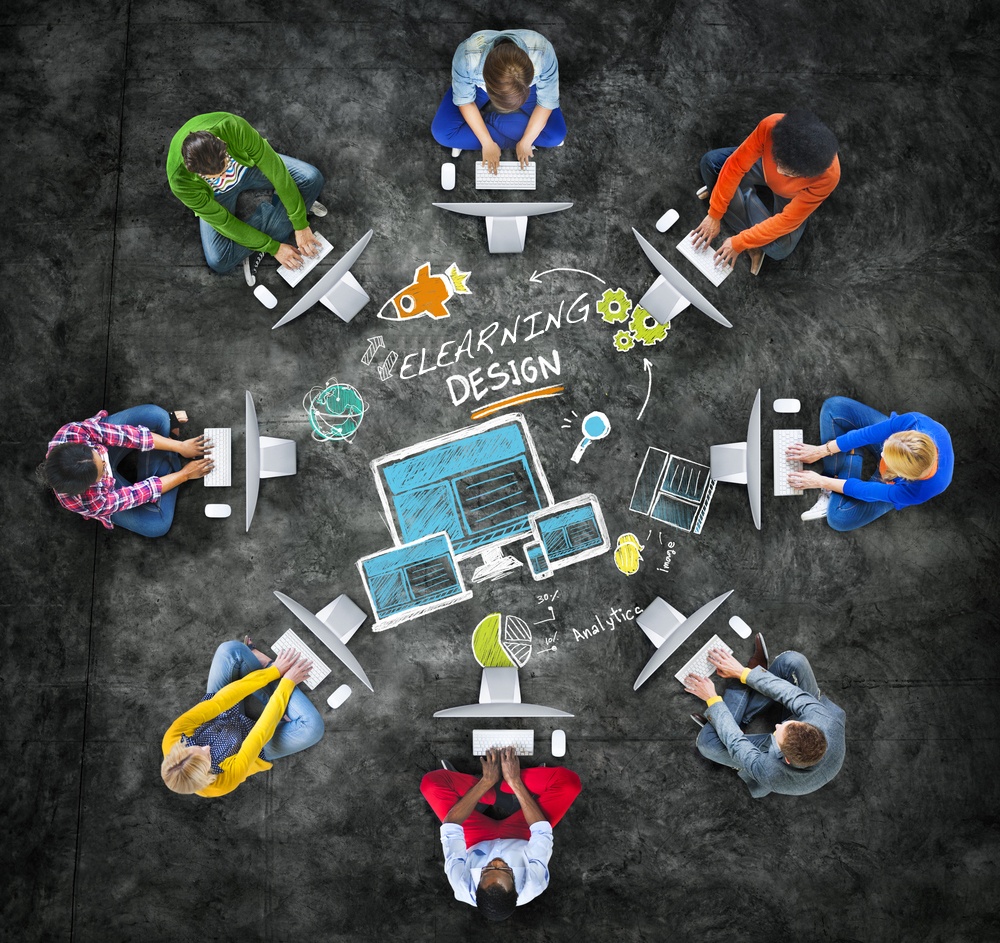eLearning Templates All eLearning Pros Should Include In Their Library
Which types of eLearning templates should you upload to your design database? Using a pre-built layout can make your draft-work much faster and by extension, cheaper. After all, fewer (wo)man-hours can trim labor costs. However, there’s a genuine concern that anyone could use the same eLearning template and produce the same work. Your eLearning course could end up looking like a knock-off. Still, the way you combine eLearning templates expresses your own creative flair. And besides, an eLearning template is a starting point. It shouldn’t replace your design process or detract from the quality of your work. Plus, eLearning templates shorten the technical portions of eLearning course design, leaving you more time for methodology and content. Here are 7 types of eLearning templates you should add to your personal library.
7 Types of eLearning Templates To Streamline Content Development
1. eLearning Storyboards
We probably learned our first lessons (for better or worse) through nursery rhymes and bedtime stories. Narratives offer an arc and context, both of which aid recall. It’s way easier to remember a story than a dull string of facts. As an eLearning professional or eLearning course developer, your eLearning storyboard is your holster. You can use it to plug in theoretical lessons and turn them into a captivating, enlightening tale. You can also use eLearning storyboard templates to invent branching scenarios and program eLearning simulations. The eLearning template can be tweaked and fiddled with, ensuring coherence, structure, and flow in your eLearning course materials. Use placeholders to save space for activities and other crucial elements. Then your entire team can use the eLearning storyboard to understand the part they play in the development process and which resources are in the works.
2. eLearning Assessments
Analytics is a good way to chart the progress of your online learners, but eLearning assessments are key as well. You need pop-up quizzes, essay questions, and test templates. Once you have the basic format, you can input relevant data. You can save time and save yourself the chore of developing eLearning assessments from scratch. eLearning assessment modules can be multiple choice, drag-and-drop, or little puzzles. You can even assess your online learners via role-playing, using an immersive virtual world you’ve already created. In cases where there are online instructor sessions, start with this type of eLearning template and tailor it for each student.
3. Online Surveys
One advantage that eLearning has over its offline equivalent is feedback. Any teacher will tell you how hard it is to get learners to raise their hands. With eLearning, you can easily prompt online learners with a pop-up, email, or anonymous chat room. There are lots of situations where you want eLearning feedback, and you don’t want to start from the ground up every time. Design an eLearning template where you can just slot in your queries. You could even build a database of questions you can drag and drop for online learners. Using a consistent eLearning template can prime your online learners. The second they see that colored box or grid, they get ready to respond.
4. Adjustable eLearning Course Layouts
You might judge a book by its cover, but you’ll read it by its appearance. The style of illustrations, the size of the text, the volume of photos – they all make a difference. And if you have to do this from scratch for every chapter or eLearning course, you’ll lose weeks. Develop and design eLearning templates that can be mixed and matched in minutes. As well as pre-built layouts that are categorized by subject matter, job role, or department. For example, use a specific type of eLearning template for all your customer service online training courses to maintain cohesiveness.
5. Branching Scenarios And Simulations
You want to incorporate real-world activities into your eLearning course design, but creating branching scenarios and simulations can be time consuming. Not to mention, resource draining. But there is a way to offer your online learners a higher level of immersion more rapidly: eLearning templates. Use branching scenario and simulation layouts that can be easily customized. For example, switch out the dialogue, branching path outcomes, and decision points based on the training topic or learning objective.
6. Support Resource Library Infrastructure
Microlearning tools are crucial in online training, as they offer employees moment-of-need support. However, you need to develop separate libraries to ease accessibility and ensure that online learners have relevant information. For instance, a separate repository for the sales team or managerial staff. Thus, a support resource library template can be used to structure all future repositories. The framework is already there. All you need to do is add the categories, resources, and descriptions to provide just-in-time support.
7. Gamification
Gamification templates range from levels to pre-built point systems that allow you to incentive your eLearning course. There are also badge-based types of eLearning templates that you can customize to reflect your brand image or themes that cater to online learners’ interests. A tie-in eLearning template to consider for your library is serious game layouts, which enable you to develop interactive gaming experiences that engage your online learners while building relevant skills.
Additional Resources To Add To Your L&D Template Library
Style Guides
Creating eLearning content has multiple stages and it can be hard to keep everything straight. Build an instructional eLearning template that ensures consistency. It should cover numbering formats, font choice, color options, the structure of modules, and more. These guidelines help the eLearning course flow better, making it a coherent whole. It also makes the eLearning course visually appealing and professionally put together. It’s a huge time saver because you don’t have to lose hours deciding on the design and making intricate layout decisions.
Glossaries
Depending on the type of eLearning course you’re working with, appendices could save your life. They offer quick and easy reference, both for newbies and veterans. A periodic table on Instructional Design can help you both as you create your eLearning course and as you teach it. You can measure your finished product to see if anything is missing. You can also cross-check at each stage of eLearning content development.
Conclusion
These types of eLearning templates make your eLearning course development process much faster and cheaper. Your eLearning courses are easier to consume and look more professional. As you grow in the industry, consistently expand your eLearning template library. Sign up to industry newsletters and engage peers in chat rooms and groups. This helps you discover new tools and features you can co-opt. Your eLearning template toolkit should include glossaries, style guides, surveys, pre-packaged software bundles, surveys, quizzes, eLearning storyboards, and customizable design layouts.
You might have great eLearning content, but is it being overshadowed by outdated eLearning templates? Wondering how to develop reusable eLearning templates from scratch? Download our free eBook eLearning Templates From A To Z to discover how to choose the right eLearning template for your eLearning course, how to create a reusable eLearning template from scratch, its essential elements, as well as how to refresh outdated eLearning templates on a budget.








